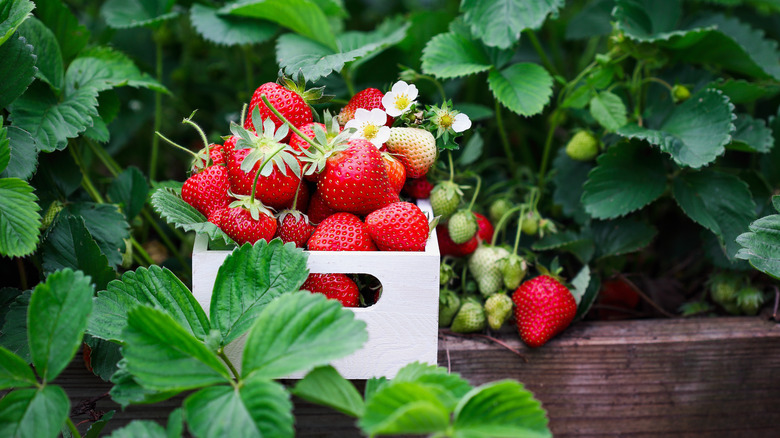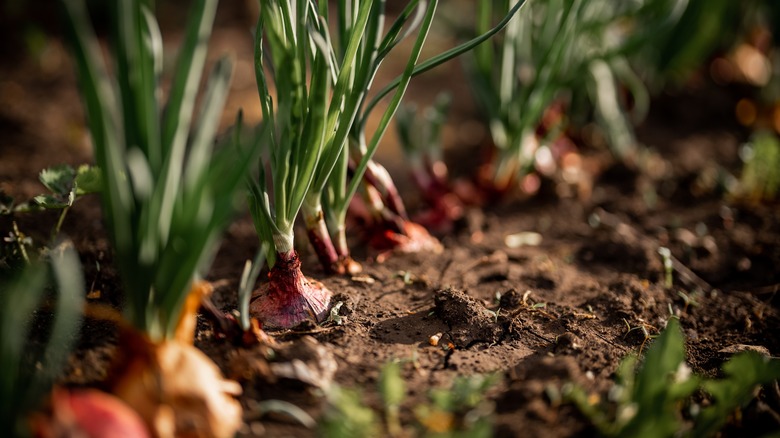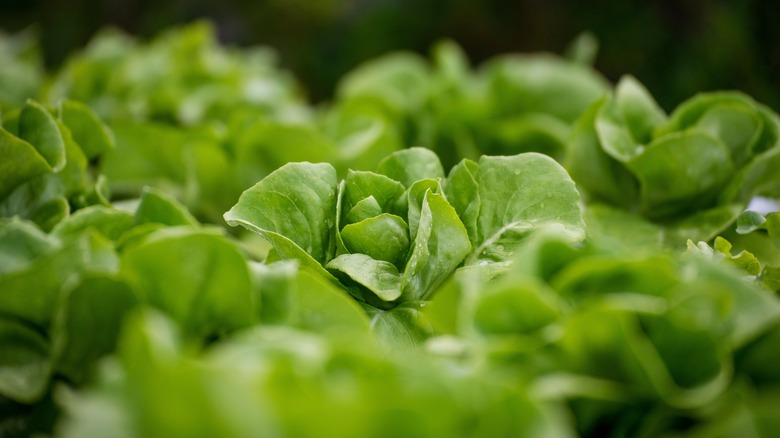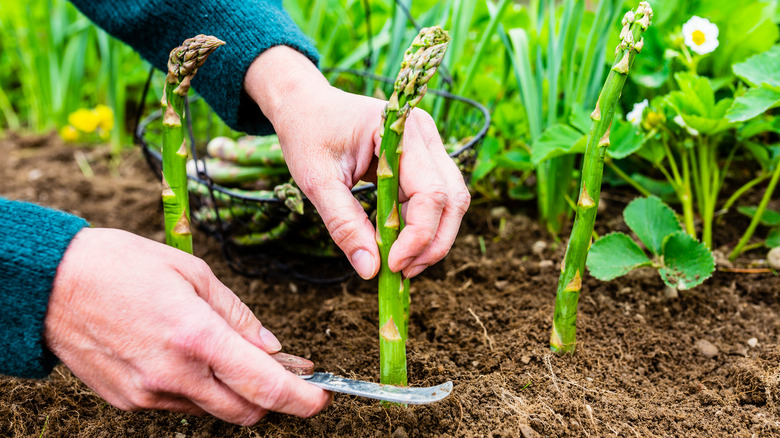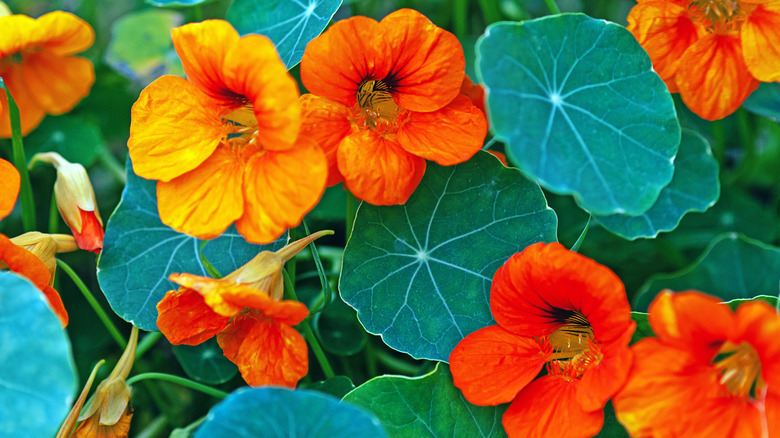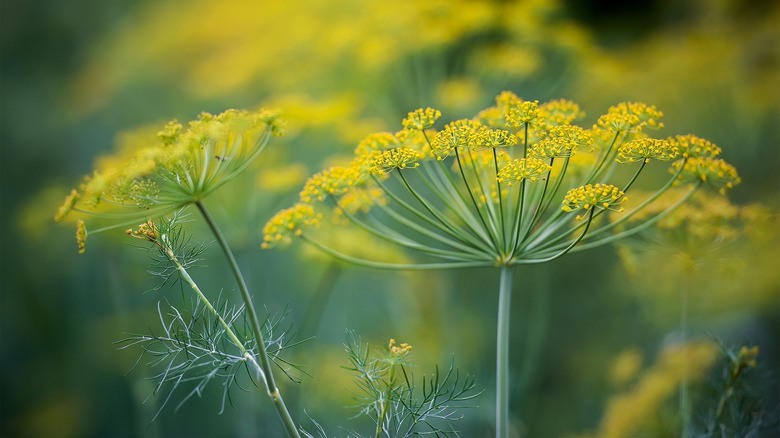Companion Plants That Are Going To Get Along With Your Strawberries
We may receive a commission on purchases made from links.
It's hard to beat the taste of biting into a fresh, warm, homegrown strawberry straight from the garden. (That is, after using your pants to wipe off any dirt first, of course, as any true gardener would.) While strawberry plants themselves are fairly low-maintenance, the fruits are a favorite of many pests, including slugs and spider mites. While companion planting is often used to make the most of a small garden space, the right combinations can also help repel damaging insects.
As you plan your perennial strawberry garden, keep in mind that these plants reproduce by sending out runners. These above-ground stems produce leaves and roots that eventually grow into another plant. Since strawberries can spread so quickly, you should place your first plants about 18 inches apart. You could fill in the space between plants with mulch to help control weeds and retain moisture, or you could make the most of that space by interplanting herbs, flowers, or vegetables. Here are a few plants that make great companions for strawberries.
Onions
Onions are in the allium family, which means they have that tell-tale pungent scent that makes our food taste good but is not appealing to pests. Onions are particularly repellant to slugs, one of the most detrimental pests for strawberries. These bulbs also happen to mature at the same time that strawberry plants begin to send out runners, so you can harvest your onions to make room for even more of these fruiting plants.
Lettuce
The compact growth habit of lettuce makes it perfect to place between strawberry plants. You can directly sow seeds and thin the plants as needed, or you can place a lettuce seedling in any spot there's room between strawberry plants. Lettuce is also prone to slug damage, but you can protect both crops with an iron phosphate-based product, like Sluggo, which is an organic, naturally occurring compound that's safe to use around wildlife and pets.
Asparagus
Two perennials in a shared garden space? That can't work, right? It can if they have complementary growth habits. Strawberry plants grow up to about 1 foot tall and 2 feet wide, while asparagus plants simply put up thin spears that should be harvested when they're about the size of a pencil in the spring. Not only do these crops share space well during their harvest season, but the flowy stalks of summer asparagus protect strawberry plants from the extreme sun in the heat of summer.
Nasturtium
If you're not growing nasturtiums somewhere, anywhere, in your garden, you are really missing out on a beautiful multi-purpose plant. With their large, disk-shaped leaves and colorful blooms, nasturtiums make a stunning addition to any space, but they also repel pests, including aphids. Every part of the nasturtium plant is edible. The blooms and leaves make gorgeous additions to salads and the seeds can be eaten like capers. Is there anything this plant can't do?
Dill
Like asparagus, dill makes a good companion plant for strawberries because of their complementary growth habits. Dill grows thin and tall, and the leaves can be harvested at any time for culinary uses. This flavorful herb also attracts many beneficial insects. It's the host plant for the Black Swallowtail butterfly, so adding it to your garden supports these beautiful creatures. The blooms of dill also attract predatory insects like hoverflies who will gladly make a meal out of any aphids and thrips that show up on your strawberry plants.
